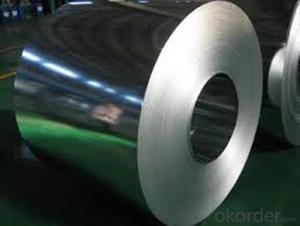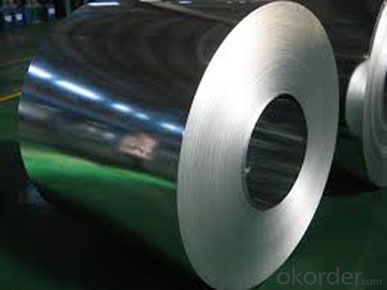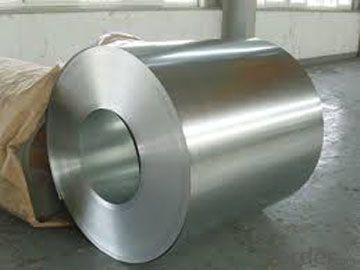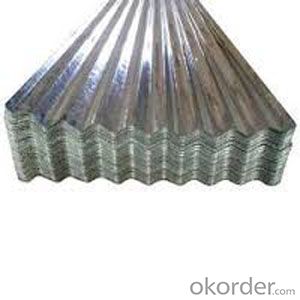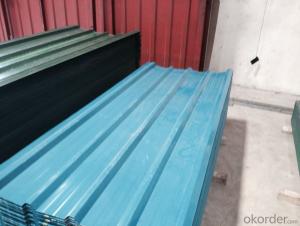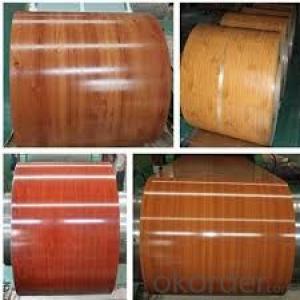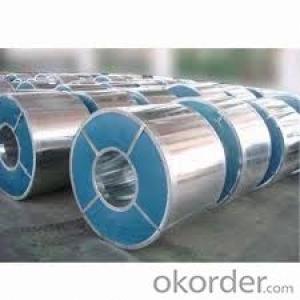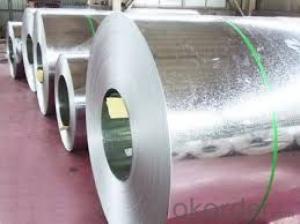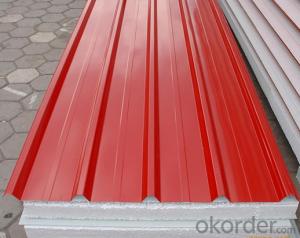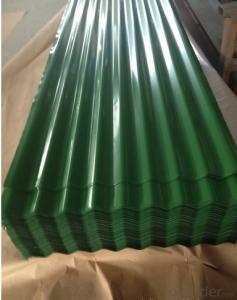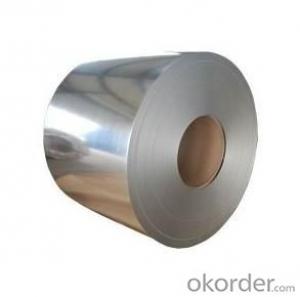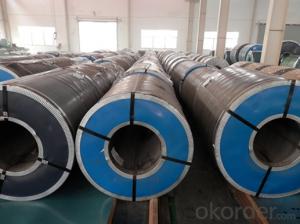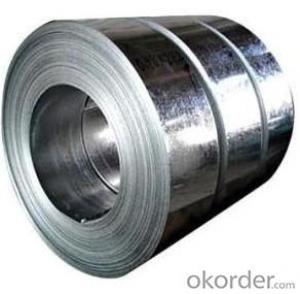HOT- DIP Galvanized Steel Coils Regular 1000mm 1250mm Z60-Z120 Dx51d+Z, DC01
- Loading Port:
- China main port
- Payment Terms:
- TT or LC
- Min Order Qty:
- 25 m.t.
- Supply Capability:
- 10000 m.t./month
OKorder Service Pledge
OKorder Financial Service
You Might Also Like
Hot DIP Galvanized Steel Coils Regular 1000mm 1250mm Z60-Z120 Dx51d+Z, DC01
Description:
EN 10147 Structure hot dip galvanized steel coil S250GD+Z, S350GD+Z (SGC340, SS275, SS340)/Custom Deep drawing hot dip galvanized steel coil DX52D+Z, DX53D+Z, S
Galvanized steel is taken cold rolled steel as the base metal, after continuous hot dip galvanizing process, the product produced is an excellent resistance to atmospheric corrosion coating steel coil, as the steel gets coated in layers of zinc and rust won't attach this protective metal; Cold rolled plate by hot-dip galvanizing may extend the service life of 15-20 years.
For countless outdoor, marine, or industrial applications, galvanized steel is an essential fabrication component. Hot dip galvanized steel is used in applications where steel may be exposed to weather, but where stainless steel is too expensive.
Application:
Construction
Manufacture anticorrosion, industrial and civil architecture roof boarding, roof grille
Light industries
Home appliance's case, civil chimney, kitchen utensils
Auto industry
Corrosion resistant parts of cars
Agriculture
Food storage, meat and aquatic products' freezing and processing equipment
Commerce
Equipments to store and transport materials, and packing implements
andard | EN 10142 | DX51D+Z, DX52D+Z, DX53D+Z |
JIS G3321 | SGCC, SGCD, SGCDD, SGC400 | |
ASTM A792M | CS type C, CS type B, DS, SS250 | |
Base Metal | Cold rolled steel coils SPCC, SPCD, SPCE, DC01, DC03, DC04, CS, DS, DDS, Q195, Q250, Q350 | |
Thickness | 0.14mm-3.0mm | |
Width | 600mm-1600mm | |
Coil ID | 508mm, 610mm | |
Zinc coating | 60g/m2-450g/m2 | |
Surface treating | chromium free passivation, chromium passivation, fingerprint resistant, oiled | |
Spangle types | Minimal spangle, zero spangle, regular and big spangle | |
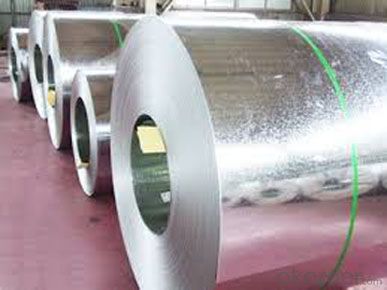
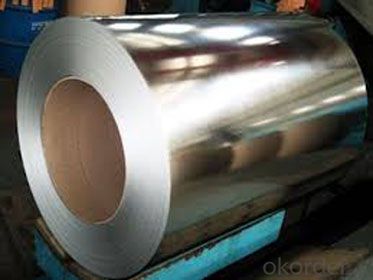
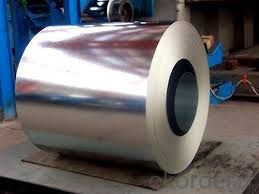
FAQ
1. What's your normal delivery time?
Our delivery time about 10-20days for standard sizes, if you have other requirements like hardness and width ,it is about 20-40days. But don't worry ,we also try our best for the delivery time ,because time longer and our cost is higher.
2.Are the products tested before shipping?
Yes, all of our PPGI and GI was qualified before shipping. We test every batch every day.
3. Is the sample available?
Yes, samples can be sent for test if you need.
- Q: I noticed a friend's appliances are not magnetic, and mine are. Both are stainless steel. Are there two types of stainless steel or something? Thanks
- Is Stainless Steel Magnetic
- Q: What are the different methods of coil welding for steel coils?
- There are several different methods of coil welding for steel coils, each with its own advantages and disadvantages. Here are some of the most commonly used methods: 1. Resistance Welding: This method involves passing an electric current through the coils to generate heat, which then fuses the two ends together. Resistance welding is a fast and efficient process that produces strong and reliable welds. It is commonly used in industries where high-speed production is required. 2. Arc Welding: Arc welding uses an electric arc between an electrode and the workpiece to create a weld. This method can be further divided into different processes, such as shielded metal arc welding (SMAW), gas metal arc welding (GMAW), and flux-cored arc welding (FCAW). Arc welding provides good penetration and can be used on a wide range of steel coils. 3. Laser Welding: Laser welding utilizes a high-powered laser beam to melt and fuse the two ends of the coils together. This method offers precise control, high welding speeds, and minimal distortion. It is often used in applications where precision and aesthetics are crucial, such as the automotive and electronics industries. 4. Induction Welding: Induction welding involves heating the coils using electromagnetic induction. The heat generated melts the edges, which are then pressed together to form a weld. This method is particularly suitable for thin-gauge steel coils and provides good control over the welding process. 5. High-Frequency Welding: High-frequency welding utilizes high-frequency current to heat and weld the coils together. This method is commonly used for pipes and tubes and offers high production rates and good weld quality. 6. Friction Welding: Friction welding uses the heat generated by rubbing the two ends of the coils together to create a weld. This method is fast, reliable, and produces strong joints. It is often used in applications where high-strength welds are required, such as the automotive and aerospace industries. These are just a few of the different methods of coil welding for steel coils. The choice of method depends on factors such as the type and thickness of the steel, the required weld strength, production speed, and overall project requirements.
- Q: How are steel coils inspected for yield strength using tensile testing?
- Steel coils are inspected for yield strength using a testing technique called tensile testing. Tensile testing involves subjecting a sample of the steel coil to controlled tension until it reaches its breaking point. This test helps determine various mechanical properties of the steel, including yield strength. To inspect steel coils for yield strength using tensile testing, a small strip of the coil is cut and prepared for testing. The strip is placed in a tensile testing machine, which consists of two grips that firmly hold the strip at opposite ends. The machine then applies a steadily increasing force to the strip, causing it to elongate until it ultimately breaks. During the test, the machine measures the force applied and the elongation of the strip. The yield strength is determined by identifying the point on the stress-strain curve where the material begins to deform plastically, or exhibit permanent deformation without any increase in load. The yield strength is typically reported as the stress required to cause a specific amount of plastic deformation, commonly 0.2% or 0.5%. This value represents the maximum stress that the steel can withstand without permanent deformation occurring. By conducting tensile testing on a sample of the steel coil, it is possible to determine its yield strength. This information is crucial for ensuring the quality and reliability of the steel coil, as it indicates the maximum stress it can withstand before permanent deformation occurs. Additionally, this testing method allows for the evaluation of other mechanical properties, such as ultimate tensile strength, elongation, and modulus of elasticity, providing a comprehensive understanding of the steel's performance characteristics.
- Q: Why?Which one should i get? I am just starting to learn Guitar. Which one would be better for me? What is the difference? I already got the acoustic nylon but i might return it... if the steel is better.
- A nylon string guitar, more properly called a classical guitar, is used almost exclusively for playing classical music. Unless you're interested in classical music you should avoid this guitar. Also, it is only played fingerstyle so you will not be able to learn how to use a pick, which is a valuable, necessary skill. Steel string acoustic guitars are used for a wide variety of music including rock, pop, folk, bluegrass, and more. This is a much more versatile guitar and is the one you probably should have bought.
- Q: But we've had a problem with bears being attracted to the water in the Intex Inflatable pools, the bear would come at night every so often and push on the sides letting out the water.Would a bear be able to bend a steel frame before I go and spend money?
- depends on the steel thickness and positioning. frm your question I'm guessing you're not really well versed in steel framing or use... im guessing whatever you build, a bear can destroy. if i was to build it not even 100 bears can destroy it. it doesn't require much steel, it's just about bracing the positing of steel and some design.
- Q: How are steel coils used in the production of shipbuilding components?
- Steel coils are used in the production of shipbuilding components as they are the primary raw material for manufacturing various structural and mechanical parts, such as hulls, decks, bulkheads, and frames. These coils are unwound, cut, shaped, and welded to form the required sections and profiles, providing the necessary strength and durability to withstand the harsh marine environment.
- Q: How are steel coils used in the manufacturing of automotive accessories?
- Due to their strength, durability, and versatility, steel coils find widespread use in the manufacturing of automotive accessories. These coils act as the primary raw material for various components and parts utilized in the automotive industry. One notable application of steel coils in automotive accessory production involves the creation of body panels and frames. These coils are shaped and formed according to desired specifications, and subsequently undergo cutting, stamping, and welding processes to fabricate the body panels and frames of vehicles. The exceptional strength of steel coils ensures that the resulting body panels and frames possess the necessary robustness to endure daily use and provide structural integrity to the vehicles. Moreover, steel coils are also employed in the production of automotive suspension systems. Specifically, coil springs, which constitute integral elements of the suspension system, are commonly fashioned from steel coils due to their capability to absorb and distribute the weight and impact of the vehicle. By supplying essential support and shock absorption, these coil springs contribute to a smooth and comfortable ride. Furthermore, steel coils are utilized in the manufacturing of various automotive accessories like exhaust systems, brackets, and other components. These coils are shaped and formed into the desired designs, and subsequently undergo cutting, bending, and welding procedures to fabricate these accessories. The strength and durability of steel render these accessories capable of withstanding high temperatures, vibrations, and other harsh operating conditions. In conclusion, the utilization of steel coils plays a pivotal role in the manufacturing of automotive accessories. Their provision of necessary strength, durability, and versatility facilitates the production of various components and parts. From body panels to suspension systems and accessories, steel coils significantly contribute to the overall quality, performance, and safety of automotive accessories.
- Q: Would the Ruger Sr22 pistol or the SW MP 15-22 be any good for the steel challenge?
- Actually Steel Rain, they do have steel plate challenges for 22s. These were added to draw in family and younger people. The SR22 is a compact pistol, and may not have enough muzzle velocity to be effective short of perfect shot placement. If you choose to use it, make sure your ammo is highly reliable in it. Frankly, I'd go with a Ruger MK2 or MK3, bull barrel, 5 over the SR22. The MP 15-22, and the SR-22 rifle will be fine in the rifle group. Again, make sure you have ammo that your rifle likes. And bring more ammo than you think you need. Nothing worse than running out. Have fun!
- Q: How are defects in steel coils detected and resolved?
- Defects in steel coils are typically detected through various non-destructive testing methods such as visual inspection, ultrasonic testing, magnetic particle testing, and eddy current testing. Once a defect is identified, it is resolved through processes like grinding, polishing, welding, or cutting out and replacing the affected area. The specific resolution method depends on the type and severity of the defect, ensuring that the steel coils meet the required quality standards before further processing or usage.
- Q: What kind of insulation should be used in a steel building?
- Fiberglass batts or spray on foam both work well
Send your message to us
HOT- DIP Galvanized Steel Coils Regular 1000mm 1250mm Z60-Z120 Dx51d+Z, DC01
- Loading Port:
- China main port
- Payment Terms:
- TT or LC
- Min Order Qty:
- 25 m.t.
- Supply Capability:
- 10000 m.t./month
OKorder Service Pledge
OKorder Financial Service
Similar products
Hot products
Hot Searches
Related keywords
